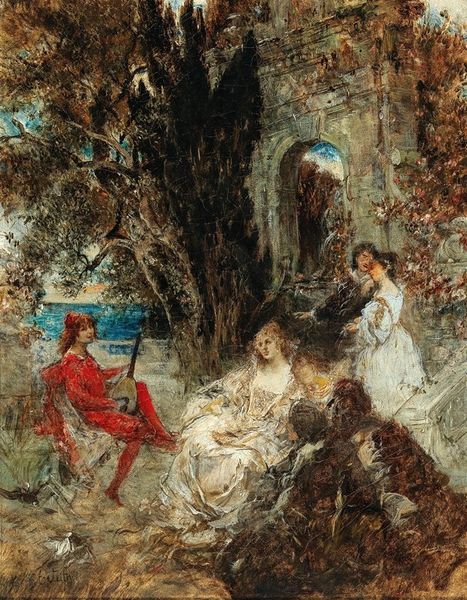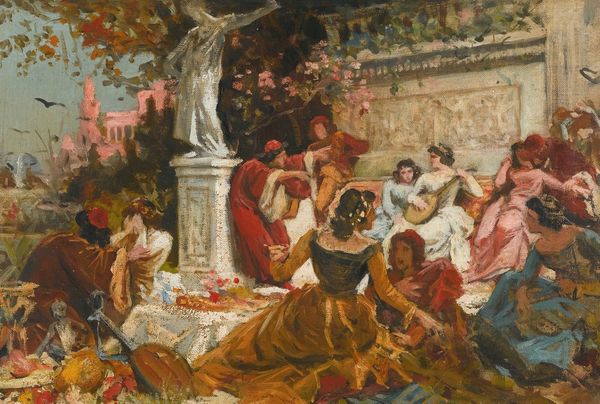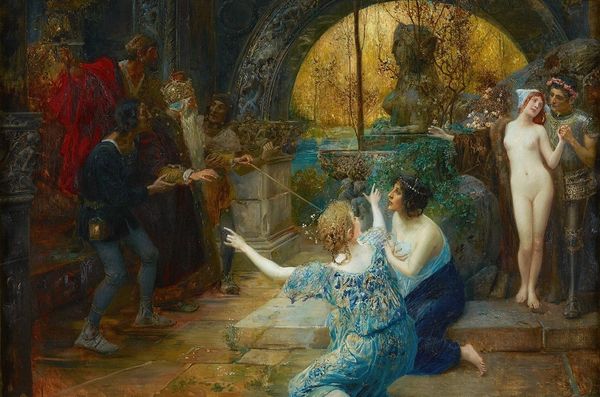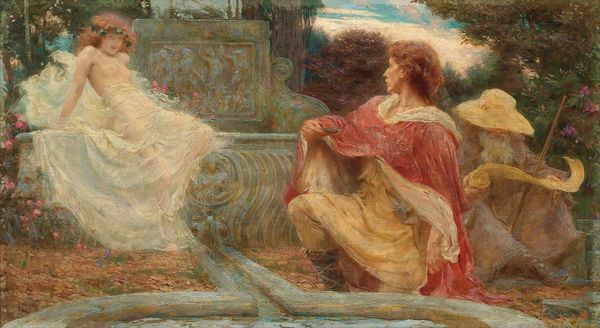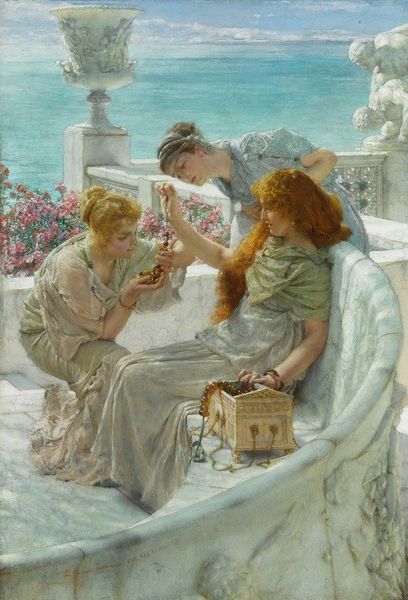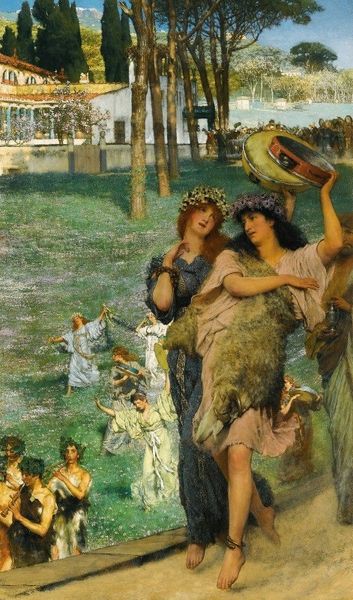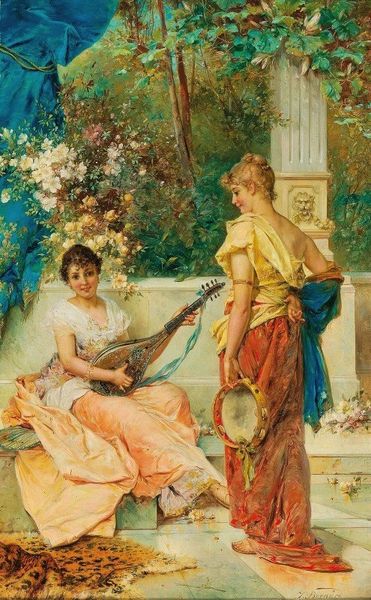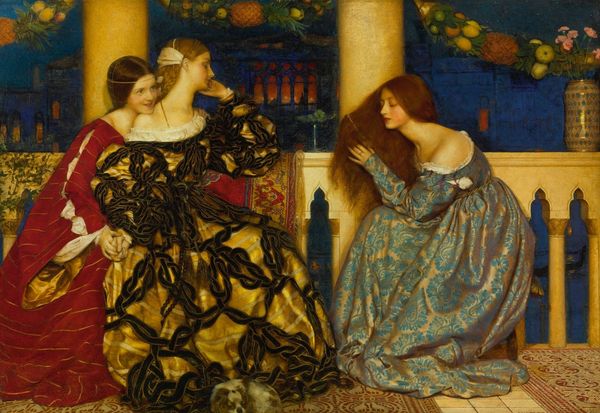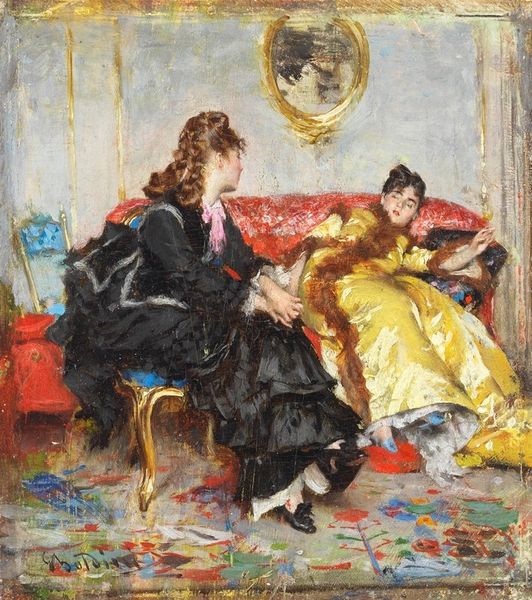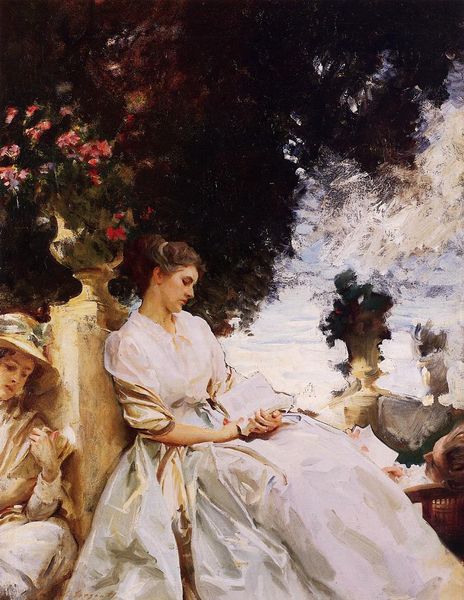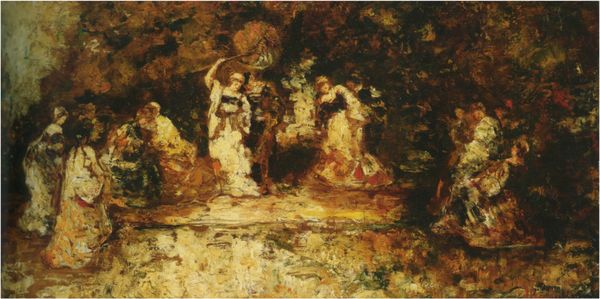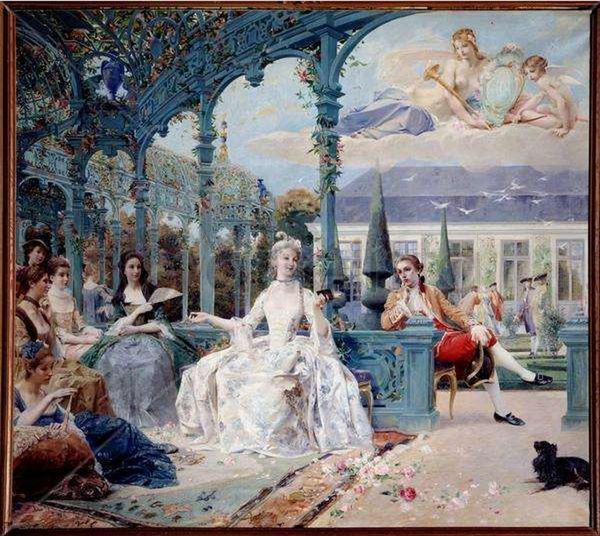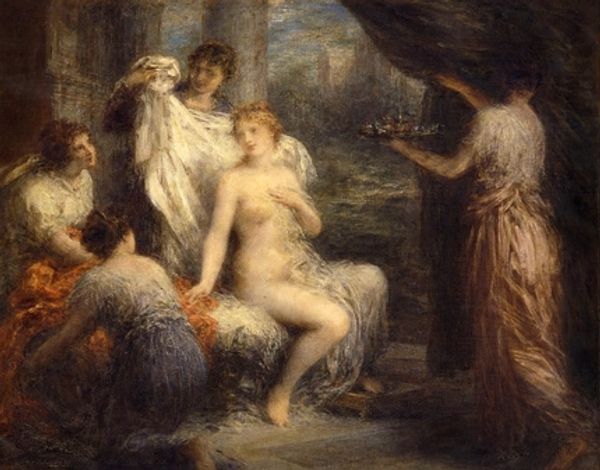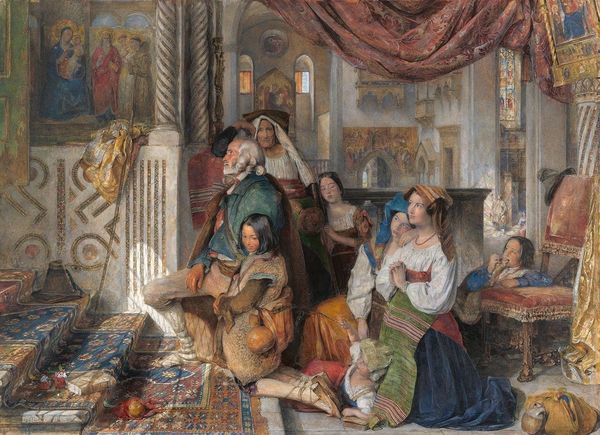
gouache, watercolor
#
gouache
#
gouache
#
figuration
#
watercolor
#
romanticism
#
mythology
#
watercolour illustration
#
genre-painting
#
history-painting
#
academic-art
#
watercolor
Copyright: Public Domain: Artvee
Editor: So this is "Umkehr zur Tugend" by Eduard Veith. It looks like a watercolour and gouache painting, with a really intricate, almost theatrical composition. It strikes me as quite dreamlike. What do you see in this piece? Curator: I see a rich tapestry of societal expectations and moral dilemmas, reflecting the socio-political anxieties of Veith's time. This idealized scene, steeped in mythological and historical references, prompts us to consider the roles of women, power, and societal pressure in shaping individual choices. The classical architecture set against the figures is fascinating – what statement do you think Veith is making here? Editor: Well, it seems to create a divide, almost like two separate worlds converging. There's a classical idealized setting, but then the figures feel very... human. Maybe the architecture represents the idealized past, whereas the figures are dealing with a very messy present. Curator: Exactly. Consider the role of "Virtue" herself. How does Veith represent her agency, or perhaps the lack thereof, within this historical context? Also, that devil-like figure on the left, engaging the king: whose stories and experiences do you think are considered authoritative and why? Editor: I hadn't really considered Virtue's agency before. The way she's positioned, almost passively on the bench…it suggests a real lack of power. The male figures do dominate the scene and take center stage. I wonder if Veith is challenging those dynamics? Curator: He certainly presents us with fertile ground to question those power dynamics. It is clear that the painting acts as a powerful artifact when contemplating gender and morality. By analyzing the visual language, can we reveal what happens when traditional expectations and lived experiences clash? Editor: I’ve never thought of Romanticism through that lens. It’s really impactful when we dig into it beyond just aesthetics. Curator: Indeed. It’s crucial to remember that art doesn’t exist in a vacuum; it both reflects and shapes the societal dialogues of its time. Hopefully, we have broadened how we view works like these.
Comments
No comments
Be the first to comment and join the conversation on the ultimate creative platform.
